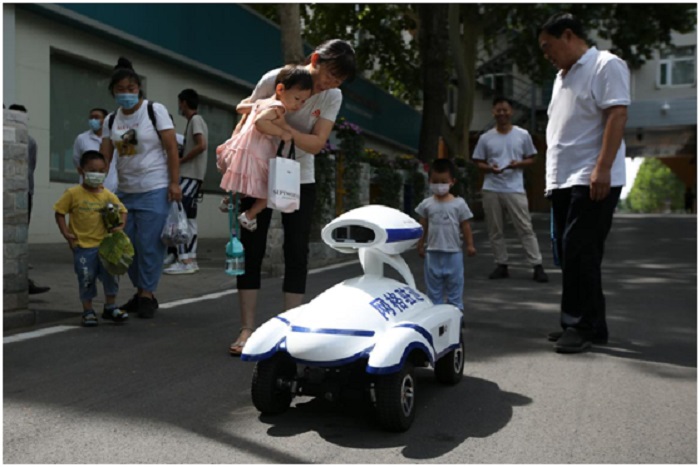



Thanks to the integrated application of dozens of advanced technologies, residents of a smart community located in Lijia neighborhood, Liangjiang New Area in southwest China’s Chongqing municipality, now enjoy a more comfortable and convenient life.
With a facial recognition system employed at the entrance to the community, residents can pass through the gate in three seconds. If it rains and they aren’t home, they can contact the property management staff via a mobile app and ask them to collect the clothes hung in the balcony. Whenever a family leaves their house, they can switch the house to a mode which will automatically raise the alarm and notify security personnel when stranger activities are found in the house.
The construction of smart community is aimed at fully leveraging new generation of information and communication technologies, such as the Internet of Things (IoT), cloud computing, and mobile Internet, to provide residents with a safe, comfortable, and convenient modern living environment with smart facilities.
According to official data, as of the end of last year, the number of urban residential communities exceeded 160,000 in China, which means enormous prospects and space for smart community construction.
Yuanfenxincun village in Dalang subdistrict, Longhua district, Shenzhen, south China’s Guangdong province, had been troubled by a number of problems in governance, including serious fire hazards, shortage of business infrastructure, and defective infrastructure for public services.
To solve the problems, the neighborhood teamed up with a company providing management services for buildings and built a digitalized residential community named “V. Town” to comprehensively improve the living experience of residents with the help of scientific and technological means.
An IoT platform of the company provides the community with services concerning the use of smart water and electricity meters, which enable residents to track their water and electricity consumption, as well as facial recognition technology for door locks and entrance to the community.
Attaching great importance to forging bonds among residents for realizing joint contribution, shared governance, and shared benefits, the community has created more than 20 clubs and held over 400 activities, which attracted more than 4,700 participants.
“Big data capabilities hold the key to smart community construction,” said an executive of “V. Town”, who explained that based on big data analytics, the community can encourage and develop products that can better meet the needs of residents, and promote well-targeted improvements in the commercial complex of the community, design of space and products, and increase in the demand for value-added services.
For instance, given the high plot ratio and poor natural lighting of the community, a drying room has been introduced to help residents dry their clothes, said the executive.
According to the executive, the community has launched house cleaning service and water delivery service based on the needs of some residents. These services, which promise that professional staff arrive at customer’s house within an hour after the request is made, saw a turnover of more than 10,000 yuan ($1,566) in half a month since they were rolled out.
Besides bringing convenience to residents, smart communities are also changing people’s lifestyles.
In a residential community in Hengshui city of north China’s Hebei province, a female resident surnamed Li put a pile of cardboard boxes into a smart trash can, and tapped the screen on the trash can to weigh the boxes and calculate their worth. Then she received an amount of money in her digital wallet of WeChat Pay from recycling these boxes.
The smart trash can consists of five recycling bins for five types of recyclable waste, namely textiles, metal, plastic, bottles, and paper. By using such trash can to “turn” people’s recyclable waste into money on their account, the community intends to encourage residents to sort waste and contribute to environmental protection.
Smart community can easily give residents greater sense of gain and better experience, according to Ma Hong, deputy director of national technical committee for digitalization and standardization of intelligent buildings and residential areas.
The methods and personnel structure for the management of a smart community are different from those in the management of traditional residential communities, Ma said, noting that the transformation from traditional facilities to smart ones serves as a positive impetus for the construction of smart cities.


The Executive and members of the.


The Acting Director, FCT Directorate of.


President Bola Ahmed Tinubu has been.



Barely a month after resignation of.


An Abuja based Legal Practitioner, Osuagwu.



Convener of Equitable Remedy, Mrs. Magaret.


Contractors handling the contract for city.


Nigerian government may have concluded plans.


The Diplomatic Correspondents Association of Nigeria.


A rights group, “Follow Me Talk.
Leave a Comment